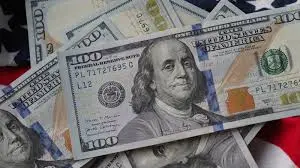We use cookies to personalise site content, social media features and to analyse our traffic. We also share information about your use of this site with our advertising and social media partners.
Posted by - zab nabs -
on - 7 hours ago -
Filed in - Business -
-
5 Views - 0 Comments - 0 Likes - 0 Reviews

Counterfeit US dollars remain a concern for businesses, retailers, and individuals across the United States. In California — with its high volume of tourism, cash transactions, and diverse retail environments — knowing how to spot fake currency and what to do when you encounter it protects your cash flow and helps law enforcement disrupt criminal networks. This guide covers simple checks your staff can use, how to respond when you suspect a counterfeit bill, the legal framework, and practical prevention measures.
Accepting a counterfeit note is an immediate financial loss: the business absorbs the value because banks and law enforcement will not reimburse for fake currency. Beyond the direct loss, recurring incidents can indicate targeted fraud against your business, harm customer trust, and create safety concerns if disputes escalate. Routine checks make detection quick and non-confrontational.
Train employees on a short three-step routine that’s fast to perform at the point of sale:
Feel the paper. Genuine US currency is printed on a cotton-linen blend that feels different from ordinary paper. There’s raised (intaglio) printing on specific areas — run a fingertip across the portrait and large numerals to feel the texture.
Look at details. Check for the watermark (hold the bill up to light) which should match the portrait and be visible from both sides. Modern bills include a security thread embedded in the paper that glows under ultraviolet light and shows the denomination. Examine microprinting (tiny text near portraits or borders) which on real bills is sharp, not blurred.
Tilt the bill. Many denominations have color-shifting ink (e.g., the numeral in the lower right on newer notes) or metallic strips that change appearance when tilted. These visual effects are hard for counterfeiters to reproduce accurately.
For busy or mobile merchants, a small ultraviolet lamp or portable detector at the till provides a rapid second check. But detectors are a supplement — not a replacement — for the “feel-look-tilt” routine.
Handling the situation calmly and legally is crucial:
Don’t return the bill to the person who offered it. Politely say you need to verify the note and offer an alternative payment method (card, mobile pay). Avoid accusing customers directly.
Minimize handling. Place the suspected bill into an envelope or folder to preserve any forensic evidence (fingerprints, smudges). Note the date, time, and transaction details.
Gather information. If safe and possible, record a description of the person and capture CCTV footage. These details are valuable to investigators.
Contact authorities. In the U.S., counterfeiting is a federal offense investigated by the United States Secret Service. Report suspected counterfeit currency to local law enforcement and to the Secret Service field office that serves your area. Your bank can also assist in verifying notes and advising next steps.
Follow law enforcement direction. Do not attempt to chase or detain suspects — leave the investigation to police.
Counterfeiting U.S. currency is a federal crime. Passing counterfeit money, even unknowingly, has legal consequences if you attempt to circulate it; knowingly distributing counterfeit notes or manufacturing them is a serious criminal offense. In California, Buy Authentic Counterfeit US Dollars California and federal authorities work together on investigations — but as a business you are typically treated as a victim when you report suspected counterfeit currency and cooperate fully.
Train employees regularly. Short, frequent refreshers (five- to ten-minute sessions) keep detection steps fresh. Role-play how to handle awkward interactions to reduce staff anxiety.
Make checks routine and visible. A sign near the register saying “All cash will be checked for authenticity” normalizes the process and reduces awkwardness for customers.
Use tools wisely. A UV lamp, magnifying glass, or a compact counterfeit detector pen can speed up verification. For high-volume cash businesses, consider a banknote counter with counterfeit detection sensors.
Keep good records and CCTV. High-quality, well-positioned cameras deter criminals and provide evidence if needed. Record transaction logs when a suspected note is found.
Build a relationship with your bank. Banks often help verify suspicious notes and can advise on local procedures for submission to authorities.
Share information with nearby merchants. Local business associations or chambers of commerce can distribute alerts about scams or patterns seen in the area.
Handling suspected counterfeit cases requires balancing safety, customer service, and evidence preservation. Train staff never to escalate confrontations. If a suspect becomes aggressive, prioritize staff safety and call the police immediately. Treat polite customers with respect; often, a person passing a counterfeit note truly believes it to be genuine.
When you hand a suspect note to authorities, provide a concise incident report: time, date, transaction details, staff names, and any CCTV files. Law enforcement and the Secret Service will examine the note and advise whether to press charges or take further steps. Your cooperation increases the chance of identifying and prosecuting offenders.
Counterfeit US currency is a preventable risk. By training employees on simple detection techniques, using affordable verification tools, keeping good records and CCTV, and cooperating with banks and law enforcement, businesses in California can significantly reduce their exposure. Treat detection as a routine part of cash handling — calm, consistent checks protect your bottom line and help stop criminal activity in your community

“To assist disaster survivors by providing a source for them to come together in time of need, to aid in the listing of events, information and other forms of assistance, and continuing support through the recovery process.”
Share this page with your family and friends.